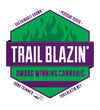Medically Certified Cannabis
Let's talk about cannabis compliance, testing with the Washington State Department of Health (DOH), and what it takes to qualify as a medical producer/processor.
What does ‘medical grade’ mean?
Clean from pesticides and heavy metals and approved by the Department of Health for medical patient use. This includes more specifically, medical card holders.
Also, Department of Health (DOH) certifications allow growers to make “structure function claims”. This means we are permitted to mention the therapeutic benefits of strains, terpenes, cannabinoids and more.
What does a DOH certification mean?
To put it simply, holding a Department of Health certification in cannabis means you test every flower harvest and those results come back completely clean of pesticides and heavy metals.
Only products with this logo have passed Department of Health certifications.

What are the current state rules for testing?
As it stands now:
(a) Only allowed pesticides shall be used in the production, processing, and handling of marijuana. Pesticide use must be consistent with the manufacturer's label requirements.
(b) Certified third-party labs must screen for any pesticides that are not allowed and are designated as having the potential for misuse on a list created, maintained, and periodically updated by the department in consultation with the Washington state department of agriculture and the WSLCB. Certified third-party labs must also screen for pyrethrins and piperonyl butoxide (PBO) in samples of concentrates, extracts, intermediate products, and imported cannabinoids. Certified third-party labs may also screen for additional pesticides.
(c) For purposes of the pesticide screening, a sample of any marijuana product shall be deemed to have failed if a pesticide that is not allowed is detected above the action level for that pesticide as determined by the WSLCB under chapter 314-55 WAC.
(d) A harvest, lot, or batch deemed to have failed pesticide screening must be destroyed according to chapter 314-55 WAC.
Want to melt your brain with the nitty gritty? Head to the Washington Department of Health website.

What are the current state rules for heavy metal testing?
(a) For the purposes of heavy metal screening, a sample shall be deemed to have passed if it meets the following standards:
Metal Limit, μg/daily dose (5 grams)
Inorganic arsenic . . . . . . . . . . . . . . . . . 10.0
Cadmium . . . . . . . . . . . . . . . . . 4.1
Lead . . . . . . . . . . . . . . . . . 6.0
Mercury . . . . . . . . . . . . . . . . . 2.0
(b) A harvest, lot, or batch deemed to have failed heavy metal screening must be destroyed according to chapter 314-55 WAC. Marijuana flowers, trim, leaves, or other plant matter deemed to have failed heavy metal screening must not be used to create extracts or concentrates. Imported cannabinoids deemed to have failed heavy metal screening must not be added to any marijuana product.
Why does Trail Blazin’ get DOH certified?
At Trail Blazin' we believe pesticides are not safe for human consumption, let alone combustion.
Taking this to heart, we don't use any pesticides on our products. We prefer clean practices and beneficial insects to mitigate pests. Going above and beyond to avoid all pesticides translates into increased health and safety, not only for our consumers and patients but for our team members as well.
Trail Blazin' test results can be found 24/7 by visiting our Drive Folder.
Why is knowledge of pesticides, heavy metals, and testing important?
Like eating organic fruits and veggies or looking for the Non-GMO Project Verified labels in the store, what we put in our bodies affects our overall health. Why should your plant medicine be any different?

Have peace of mind with the cannabis you consume.
Want to learn more about Trail Blazin's commitment to clean green weed and social responsibility? We've got you covered.
